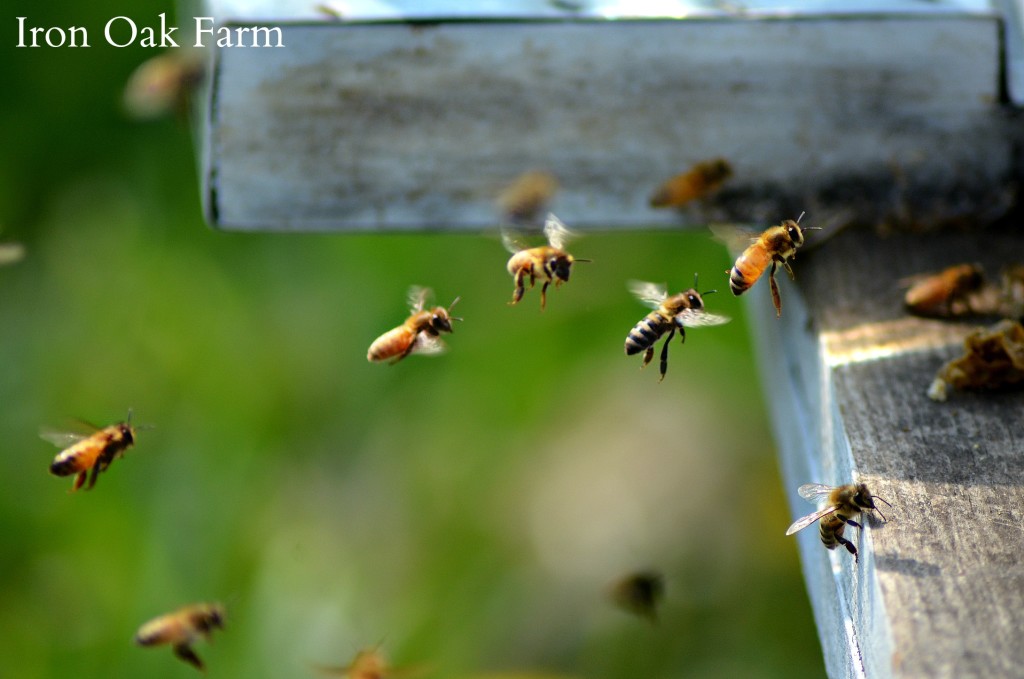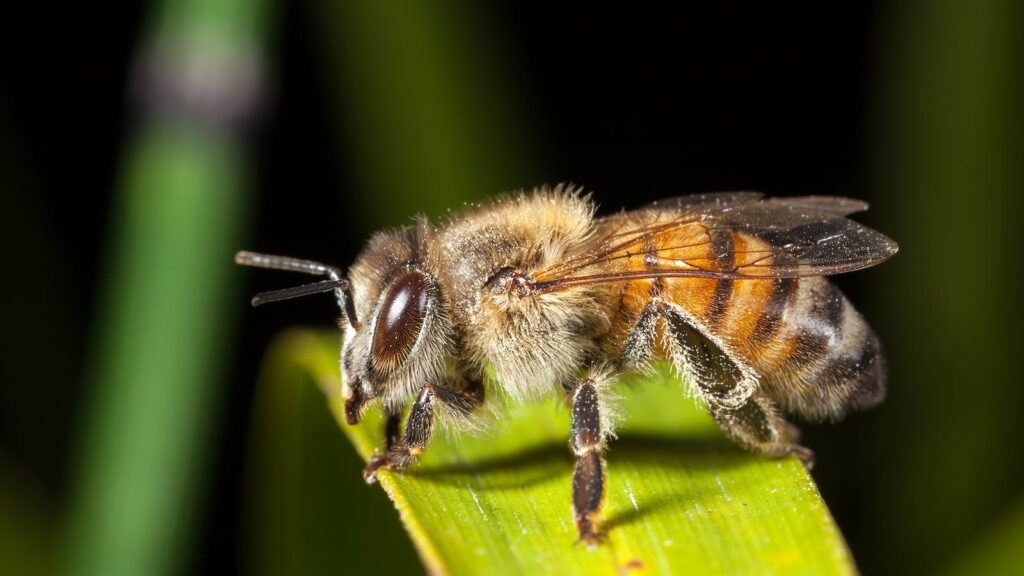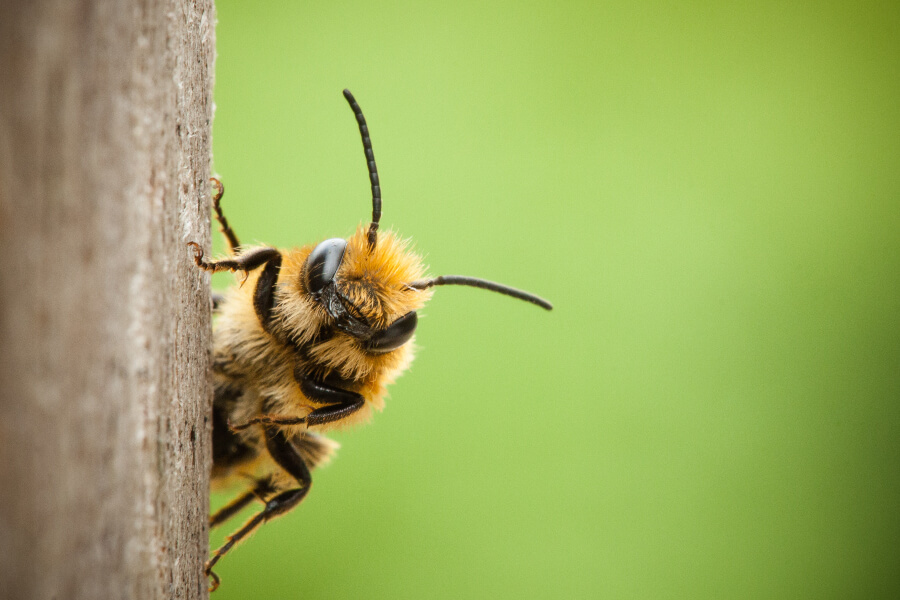
Are you tired of being stung by aggressive bees every time you go near their hive? Well, fret no more! In this article, you will discover effective techniques and strategies for handling aggressive bees without getting stung. From understanding their behavior to wearing the right protective gear, you’ll be equipped with the knowledge to tame the buzz and avoid those painful stings. So, get ready to become the bee whisperer you’ve always wanted to be!

Understanding Aggressive Bees
Bees are usually known for their peaceful nature and their important role in pollination. However, sometimes bee colonies can display aggressive behavior that can make beekeeping a challenge. Understanding the characteristics of aggressive bees and the reasons behind their behavior is crucial to ensure your safety and the well-being of your bee colony.
Characteristics of Aggressive Bees
Aggressive bees can exhibit several distinct characteristics that set them apart from their more docile counterparts. These bees are more likely to sting in response to perceived threats, and their stings can be more painful and cause severe allergic reactions in some individuals. Aggressive bees are also more defensive of their hive and will vigorously protect it, even if not directly provoked. They may display more aggressive body language such as increased buzzing, darting, or headbutting.
Reasons for Aggressive Behavior
Understanding why bees become aggressive is key to effectively managing their behavior. Aggression in bees can be influenced by multiple factors, including genetics, environmental conditions, and the presence of threats. Genetic factors play a significant role, as some bee strains are naturally more prone to aggression. Environmental factors such as lack of food, water, or suitable nesting sites can also contribute to aggressive behavior. Additionally, disturbances or threats to the hive, such as excessive noise or vibrations, can trigger defensive responses from bees.
Identifying Aggressive Bee Colonies
Being able to identify aggressive bee colonies is important for beekeepers to take appropriate precautions and manage their colonies accordingly. Aggressive colonies may exhibit more defensive behavior during routine inspections, such as increased buzzing and agitation when their hive is disturbed. They may also display higher levels of aggression towards other colonies, neighboring beekeepers, or even humans in the vicinity. Additionally, aggressive colonies may have a higher incidence of stinging incidents reported by beekeepers and individuals in the surrounding area.
Safety Precautions
Working with aggressive bees requires taking extra safety precautions to minimize the risk of stings and potential harm. By wearing protective gear, choosing the right time for handling bees, creating a barrier zone, and knowing your escape routes, you can significantly reduce the chances of aggressive bee behavior turning into a dangerous situation.
Wearing Protective Gear
When dealing with aggressive bees, it is crucial to wear appropriate protective gear to minimize the risk of stings. This includes wearing a beekeeping suit or jacket, protective gloves, and a veil or beekeeping helmet. Opting for gear with smooth surfaces can also reduce the likelihood of bees getting caught on fabric or textures that may further agitate them.
Choosing the Right Time for Handling Bees
Timing is crucial when handling aggressive bees. It is best to work with the bees during cooler hours, such as early morning or late afternoon, as bees are generally calmer during these times. Avoid working with bees on windy or rainy days, as these conditions can agitate them further.
Creating a Barrier Zone
Creating a barrier zone around the beehive can provide an additional layer of protection. This can be done by placing tall vegetation or building a fence around the hive to minimize direct contact with humans or animals. This barrier can help redirect the bees’ flight patterns away from high human traffic areas.
Knowing Your Escape Routes
In the event that aggressive behavior escalates and becomes overwhelming, having clear escape routes is essential. Beekeepers should always be aware of their surroundings and have multiple exit paths planned. Knowing where to retreat to and having open spaces nearby that provide cover is crucial for keeping yourself safe in case of a sudden attack.
Techniques for Calming Aggressive Bees
Calming aggressive bees can significantly improve the manageability of your colony and reduce the risk of stings. By utilizing smoke, subdued lighting, reducing vibrations, using pheromones, and handling bees in cooler weather, beekeepers can effectively calm aggressive bees and create a more harmonious beekeeping experience.
Using Smoke
Smoke is a commonly used technique to calm bees during inspections. By gently Blowing cool smoke into the hive entrance, the bees’ natural response is to focus on engorging themselves with honey, preparing for the possibility of evacuating their hive due to a potential fire. This distraction allows beekeepers to work more easily within the hive without triggering aggressive behavior.
Using Subdued Lighting
Bright lights can agitate bees, making them more defensive. Using subdued lighting during hive inspections, such as a red filter or dimmed flashlight, can help reduce their aggression. Bees are less sensitive to red light, making it an ideal choice for illuminating the hive without causing undue stress.
Reducing Vibrations
Bees are highly sensitive to vibrations, which can trigger defensive responses. To minimize agitation, it is important to handle the hive and frames with gentle, slow movements. Avoid any sudden jolts or vibrations that may startle or alarm the bees, as this can escalate their aggression.
Using Pheromones
Pheromones play a crucial role in bee communication and can be utilized to calm aggressive colonies. Beekeepers can use a commercially available synthetic queen pheromone or “queen mandibular pheromone” to help create a sense of stability and calm within the hive. These pheromones mimic the queen’s scent and can help reduce aggression, as the bees perceive the presence of their queen.
Handling Bees in Cooler Weather
Bees tend to be less aggressive in cooler temperatures, as their metabolism slows down. Taking advantage of cooler weather, such as early mornings or cooler seasons, can help minimize aggressive behavior. However, it is essential to strike a balance and avoid handling bees in excessively cold conditions, as this can stress the colony.
Best Practices for Beehive Maintenance
Maintaining a healthy beehive is essential for minimizing the occurrence of aggressive behavior. By conducting regular hive inspections, controlling overpopulation, providing adequate ventilation, maintaining a clean beehive, and monitoring for diseases and pests, beekeepers can ensure the overall well-being of their colony.
Regular Hive Inspections
Regular hive inspections are crucial for identifying and addressing any issues that may contribute to aggression. By inspecting the hive frames, honey stores, brood patterns, and general colony health, beekeepers can spot early signs of potential problems and take appropriate measures to prevent them from escalating.
Controlling Overpopulation
Overpopulated hives can increase stress and aggression. Beekeepers should regularly monitor and manage the population by performing swarm prevention techniques or splitting the hive as necessary. By maintaining a balanced population, bees have sufficient space and resources, reducing the likelihood of aggressive behavior.
Providing Adequate Ventilation
Proper ventilation is essential for maintaining temperature and humidity levels within the hive. Inadequate ventilation can create stressful conditions for the bees, which can contribute to aggression. Ensuring the hive has sufficient ventilation, such as screened bottom boards or ventilation holes, allows for optimal air circulation, reducing stress levels and potential aggression.
Maintaining a Clean Beehive
A clean and hygienic beehive is essential for the overall health of the colony. Regularly removing debris, such as dead bees or excess propolis, from the hive helps maintain a clean and organized environment. This cleanliness reduces the risk of diseases and pests, which can cause stress and aggression among the bees.
Monitoring for Diseases and Pests
Regular monitoring for diseases and pests is crucial to maintain a healthy bee colony. Certain diseases, such as foulbrood, can cause aggressive behavior in infected colonies. Implementing a monitoring program and taking appropriate actions, such as disease management techniques or treatments, can help prevent the spread of diseases and minimize aggression.

Requeening the Aggressive Colony
Requeening an aggressive colony may be necessary if other interventions fail to mitigate their aggressive behavior. By identifying the need for requeening, finding a suitable replacement queen, and implementing the requeening process properly, beekeepers can potentially transform an aggressive colony into a more manageable one.
Identifying the Need for Requeening
Repeated aggressive behavior, failed attempts to calm the colony, and a continuous high level of aggression may indicate the need for requeening. By closely monitoring the colony’s behavior and assessing its response to calming techniques, beekeepers can determine if requeening is necessary to address the aggression.
Finding a Suitable Replacement Queen
Finding a suitable replacement queen is essential for requeening an aggressive colony successfully. Consider selecting a queen from a strain known for its gentle behavior. It may be helpful to seek advice from experienced beekeepers or reputable queen breeders who can provide guidance on selecting a suitable replacement queen. Ensuring the health and genetic traits of the queen are also important factors to consider.
Implementing the Requeening Process
Requeening an aggressive colony should be done with care and precision. The existing queen should be removed, and the new queen should be introduced gradually and in a way that minimizes disruption to the colony. Following established techniques for introducing a new queen, such as using a queen introduction cage or introducing the queen alongside her workers, can help facilitate a successful transition and reduce the likelihood of aggression.
Working with Professional Beekeepers
Seeking guidance and support from professional beekeepers can provide invaluable assistance in handling aggressive bee colonies. By actively seeking assistance from experienced beekeepers, attending beekeeping workshops and conferences, and collaborating with local beekeeping associations, you can enhance your beekeeping knowledge, gain practical insights, and benefit from the shared experiences of seasoned professionals.
Seeking Assistance from Experienced Beekeepers
Experienced beekeepers have encountered and managed various situations with aggressive bees. Seeking their advice and guidance can offer valuable insights and strategies for handling and managing aggressive colonies effectively. They can provide expert advice tailored to your specific challenges, helping you address the unique characteristics of your colony.
Attending Beekeeping Workshops and Conferences
Attending beekeeping workshops and conferences can further enhance your knowledge and skills in managing aggressive bees. These events often feature talks and demonstrations from experienced beekeepers, researchers, and industry experts who share their expertise on various beekeeping topics. Learning from others’ experiences and having the opportunity to network with fellow beekeepers can be invaluable resources for beekeepers working with aggressive colonies.
Collaborating with Local Beekeeping Associations
Local beekeeping associations are excellent resources for beekeepers seeking support and camaraderie. These associations often host meetings, workshops, and mentorship programs where beekeepers can learn from each other and build relationships within the beekeeping community. Collaborating with fellow beekeepers can provide a network of support and shared experiences, particularly when dealing with the unique challenges of aggressive bee colonies.
Alternative Beekeeping Methods
Exploring alternative beekeeping methods can provide beekeepers with additional strategies to manage aggressive colonies. These methods focus on different hive designs and management approaches that may cater to the needs of aggressive bees, offering potential solutions and alternatives to traditional beekeeping practices.
Top-Bar Hive Beekeeping
Top-bar hive beekeeping is a hive design that offers an alternative to conventional Langstroth hives. These hives feature bars laid horizontally across the top, allowing bees to build natural comb without using foundation frames. Some beekeepers find that aggressive colonies exhibit less aggression when managed in top-bar hives, potentially due to the difference in hive structure and management practices.
Natural Beekeeping Techniques
Natural beekeeping techniques prioritize mimicking the bees’ natural environment and behavior as closely as possible. This includes avoiding chemical treatments, allowing for natural comb building, and minimizing hive manipulations. Some beekeepers believe that by embracing more natural management methods, aggression can be reduced as bees are allowed to follow their instinctive behaviors.
Warre Hive Beekeeping
Warre hive beekeeping is another alternative to traditional hive designs. These hives utilize vertical top bars and feature smaller boxes called “supers.” Warre hives aim to mimic the bees’ natural hive structure and allow for minimal intervention. Some beekeepers have reported more success with handling aggressive bees in Warre hives, as the management style encourages a more hands-off approach.
Horizontal Hive Beekeeping
Horizontal hive beekeeping, as the name suggests, utilizes horizontally oriented hive configurations. These hives differ from traditional vertical hives and offer an alternative management approach. The management techniques associated with horizontal hive beekeeping focus on minimal intervention and allowing bees to develop their optimal colony dynamics. Some beekeepers have found success in managing aggressive bees using horizontal hive setups, as the management practices are often less invasive and disruptive.
Dealing with Swarming Bees
Swarming is a natural behavior of bees and can be a challenging situation to manage, especially when dealing with aggressive colonies. By understanding swarming behavior, taking preventive measures, managing swarms, and capturing and relocating swarms, beekeepers can effectively address swarming issues and reduce the likelihood of aggression.
Understanding Swarming Behavior
Swarming is a natural way for a colony to reproduce and expand its population. When a hive becomes overcrowded, the bees will create a new queen and a portion of the colony will leave the hive to find a new nesting site. Understanding the triggers and signs of swarming behavior can help beekeepers anticipate and manage swarms.
Preventing Swarming
Preventing swarming is essential, as swarms can create disruptions and increase the chances of aggressive behavior. Providing sufficient space in the hive, regular inspections to monitor population growth, and practicing swarm prevention techniques such as making splits or adding supers can help prevent swarming. By addressing the factors that contribute to overcrowding, beekeepers can minimize the likelihood of swarming and potential aggression.
Managing Swarms
Despite preventive measures, swarms may still occur. Managing swarms involves safely containing the bees and relocating them to a suitable location. Beekeepers should be prepared with the necessary equipment, such as swarm boxes or bait hives, to safely capture swarms. Promptly addressing swarming situations can prevent the bees from establishing a new colony in unwanted areas, reducing the risk of aggressive encounters.
Capturing and Relocating Swarms
Capturing and relocating swarms should be done carefully and in accordance with local regulations and ethical beekeeping practices. It is essential to wear proper protective gear and handle swarms gently to avoid provoking aggression. Once the swarm is captured, it can be transported to a new location or transferred into a prepared hive. By relocating swarms to suitable areas, beekeepers can manage swarming behavior effectively and promote a more harmonious coexistence with the bees.
Beekeeping Practices to Avoid
To maintain a successful and safe beekeeping experience, it is important to avoid certain practices that can increase aggression in bee colonies. By refraining from unnecessarily agitating bees, avoiding overfeeding, maintaining hive hygiene, and using excessive smoke judiciously, beekeepers can minimize the risk of heightened aggression levels.
Agitating Bees Unnecessarily
Unnecessary agitation is one common practice that can lead to increased aggression in bee colonies. This includes rough handling, excessive noise, or sudden movements that startle or alarm the bees. By adopting gentle and calm techniques during hive inspections, beekeepers can maintain a more peaceful atmosphere and reduce the likelihood of aggressive responses.
Overfeeding Bees
Overfeeding bees can contribute to aggression, as it can lead to robbing behavior within the colony. Robbing occurs when bees from different colonies fight over food resources, resulting in heightened defensive responses. Beekeepers should ensure that they provide adequate, but not excessive, amounts of supplemental food, such as sugar syrup or pollen patties, to prevent overstimulation and potential aggression.
Neglecting Hive Hygiene
Neglecting hive hygiene can create stress and contribute to aggression in bee colonies. Dead bees, excess propolis, and debris should be regularly removed from the hive to maintain cleanliness. Proper ventilation and adequate space also help promote a healthy hive environment and reduce stress levels in the colony.
Using Excessive Smoke
While using smoke can help calm bees during inspections, using excessive smoke can have the opposite effect. Overexposure to smoke can stress the bees and trigger an aggressive response. Beekeepers should use smoke judiciously and in sufficient quantities to achieve the desired calming effect, while being mindful not to overwhelm or harm the bees.
Conclusion
Understanding and managing aggressive bee colonies requires knowledge, careful observation, and appropriate techniques. By being aware of the characteristics of aggressive bees and the reasons behind their behavior, beekeepers can take proactive measures to mitigate aggression and maintain a harmonious beekeeping experience. Practicing safety precautions, techniques for calming aggressive bees, and standard beehive maintenance practices can significantly reduce the risk of aggression. Moreover, seeking guidance from professional beekeepers, exploring alternative methods, and being aware of swarming behavior can further enhance beekeepers’ ability to manage aggressive colonies effectively. With the right knowledge and approach, beekeepers can navigate the challenges posed by aggressive bees and build a fulfilling and rewarding relationship with their buzzing companions.
